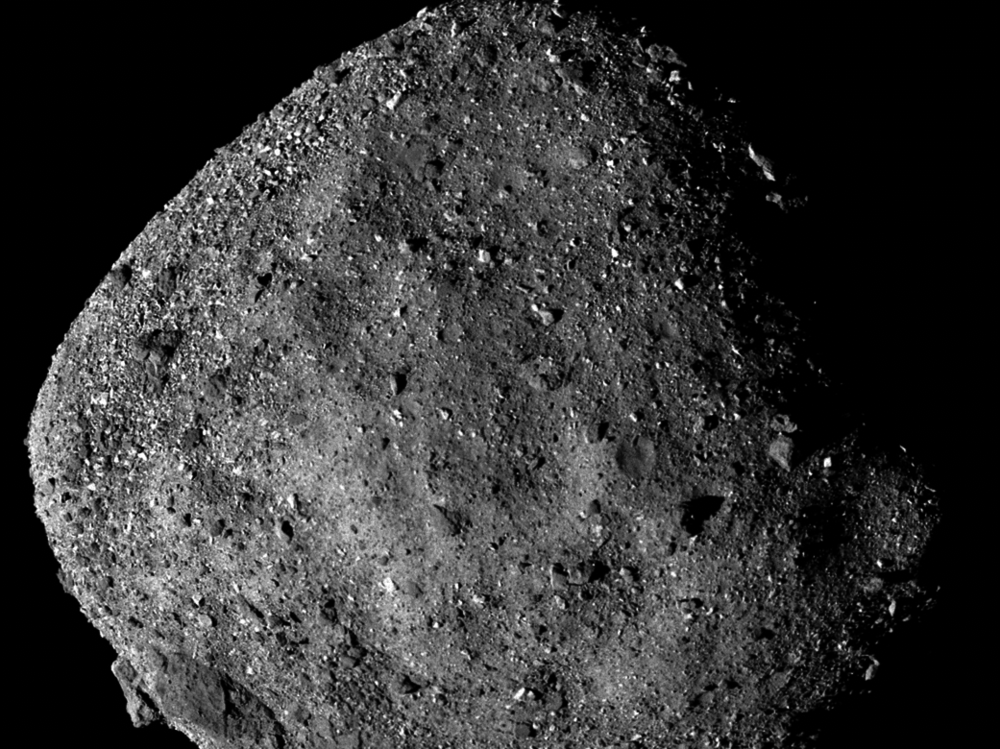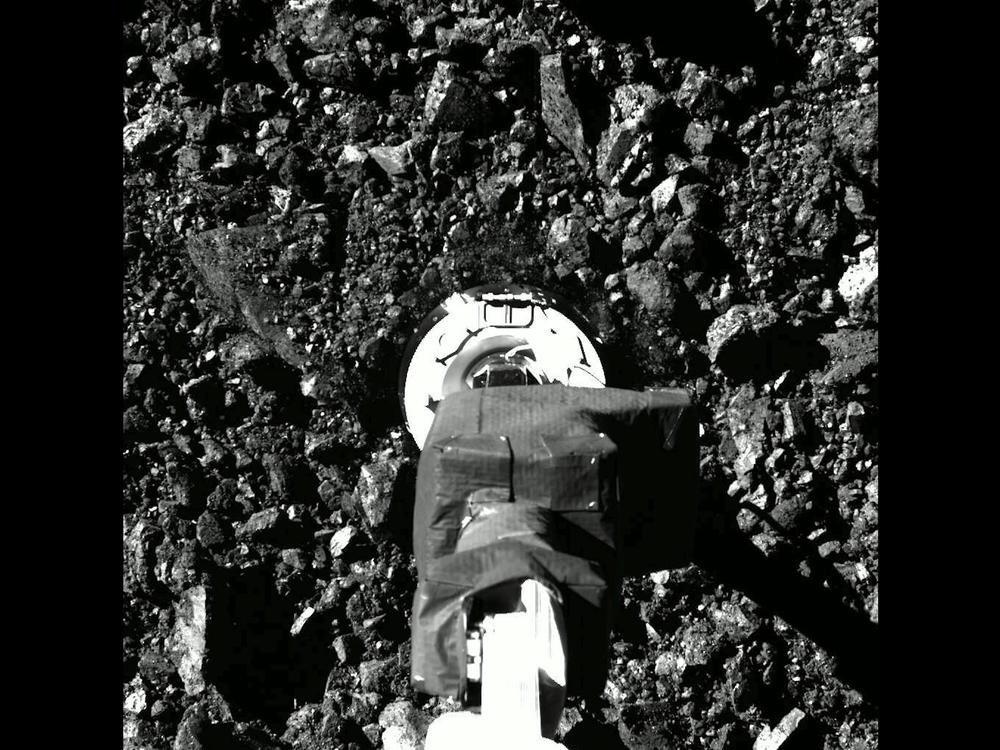Section Branding
Header Content
Got Plans For Sept. 24, 2182? This Big Asteroid Might, Too
Primary Content
A potentially dangerous asteroid called Bennu has a 1 in 1,750 chance of hitting Earth between now and the year 2300.
That's according to the most precise calculations of an asteroid's trajectory ever made, and the odds are slightly worse than NASA previously thought.
Still, the researchers studying Bennu say this doesn't keep them up at night.
"The impact probability went up just a little bit, but it's not a significant change," says Davide Farnocchia at the Center for Near Earth Object Studies at NASA's Jet Propulsion Laboratory in Southern California.
He points out that there is a 99.94% probability that Bennu is not on an impact trajectory.
"So there is no particular reason for concern," he says. "We have time to keep tracking the asteroid and eventually come to a final answer."
Bennu is a "rubble-pile asteroid" that's shaped like a spinning top, and it's wider than the Empire State Building is tall. It was discovered in 1999, and telescopes have been keeping tabs on it ever since; NASA considers Bennu and another asteroid called 1950 DA to be the two most hazardous known asteroids in our solar system.
In 2016, NASA launched the OSIRIS-REx mission to collect a sample of Bennu's rocks and to learn more about the asteroid's size, shape and composition. The spacecraft arrived at Bennu in 2018 and spent about two years flying around it like a hummingbird, studying it closely before nabbing a sample of its rubble and heading home.
All of its measurements have given researchers an unprecedented ability to understand where this asteroid is and where it might go. To predict its future path, the team took into account all kinds of small influences, including the effect of sunlight hitting Bennu, the tiny gravitational pull of more than 300 other asteroids, and the drag caused by interplanetary dust.
The researchers even checked to see if OSIRIS-REx pushed the asteroid off course when the spacecraft briefly touched its rocky surface; it turns out this sample collection maneuver had a negligible effect, as expected.
"The OSIRIS-REx mission has provided exquisitely precise data on Bennu's position and motion through space to a level never captured before on any asteroid," says Lindley Johnson, the planetary defense officer at NASA's Planetary Defense Coordination Office at NASA headquarters in Washington.
The researchers have published their predictions in the journal Icarus, and they say the asteroid will make a close approach to Earth in 2135. Bennu will pose no danger at that time, but Earth's gravity will alter the asteroid's path around the sun and affect its possibility of coming back and going splat.
The most significant date in terms of a potential impact is Sept. 24, 2182, with an impact probability of 1 in 2,700 on that day.
If an asteroid of this size did strike the planet, Johnson says, it could make a crater 6 miles wide, and the area of devastation would be as much as 100 times larger.
"An object Bennu's size impacting in the Eastern Seaboard states would pretty much devastate things up and down the coast," he says. "We now know a lot about Bennu, but what about what else is out there?"
So far, planetary protectors have spotted a little more than half of the asteroids Bennu's size that are expected to exist, Johnson says, but the recently approved Near-Earth Object Surveyor Mission should find a lot more.
And in November, NASA will launch the first mission designed to see if a spacecraft can hit a space rock and change its trajectory, to test out this way of deflecting a dangerous asteroid if that ever became necessary.
In the meantime, the precious sample of rubble from Bennu is on its way home.
"The spacecraft is basically on cruise control right now," says Dante Lauretta, the OSIRIS-REx principal investigator at the University of Arizona in Tucson. "The mission is in great shape."
In September 2023, when the capsule arrives back on Earth, scientists will finally be able to see what they got. They want to understand more about the makeup of asteroids, not just because they're a potential threat but also because these space rocks are pristine relics left over from the formation of the solar system's planets billions of years ago.
Copyright 2021 NPR. To see more, visit https://www.npr.org.


